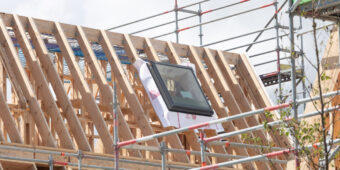Remote inspections not yet default practice
16 Sep 2024, Industry News, News

The Ministry of Building, Innovation and Employment (MBIE) has moved to reassure builders that onsite inspections currently remain standard practice for Building Consent Authorities (BCAs), despite the Government’s pledge to make remote inspections default practice
In July, Building and Construction Minister Chris Penk said the Government is progressing a requirement for BCAs to use remote inspections as the default approach to cut costs and improve build times.
“A constant frustration getting in the way of building is the cumbersome consenting system and building inspections, which are carried out to ensure a build is compliant with the Building Code,” said Penk at the time.
Measured pace of change
However, Simon Thomas, MBIE Head of Building System Delivery and Assurance, said that this change would not be happening overnight — if at all.
“The use of technology solutions and advancements such as remote inspections are not new to BCAs or building sites across New Zealand. While the Government has indicated it is exploring a range of options to increase the uptake of remote inspections, onsite inspections remain standard practice for BCAs.”
A public consultation on a range of options to increase the uptake of remote inspections and improve timelines in the delivery of inspections, including the option to require BCAs to use remote inspections as the default approach, is planned for September, said Suzannah Toulmin, MBIE Manager Consenting and Practitioners Policy.
“The consultation will seek feedback on the costs, risks and benefits of different potential approaches and will be a good opportunity for the sector to provide its views and concerns about using remote inspections.
“We will consider implementation issues in our advice to government and there will be further work to support the implementation of any options the Government decides to progress.”
BCA responsiblity
While MBIE has produced guidance for BCAs interested in adopting the use of digital technology for remote inspections of building work, it is not prescriptive, said Thomas.
“It is up to BCAs to work with builders to ensure they understand the approach and what is required.”
John Gray, President of The Home Owners and Buyers Association of insurance, a robust approval process, random audits and significant consequences for approved builders that fail to properly record the work or alter the work after the remote inspection is completed.
He says mandatory indemnity insurance is particularly important, so that councils won’t be left with liability if there are building failures.
Small learning curve
Thomas moved to reassure builders concerned about the time it may take to become competent in using remote inspection software, and said the sector has a well-developed range of tools to support BCAs and builders.
“Most software developers have provided short instructional videos and learning tools to support the user [in capturing] the information and evidence the inspector needs to check that building work complies with the building consent. Most BCAs also talk the builder through their first remote inspection. Accordingly, the time taken to learn the current systems is minimal.”
Guidance available
To help BCAs and builders, MBIE has produced a remote inspections guidance document – viewable by scanning the QR code below.
In the document, MBIE recommends that BCAs “use their data on inspection failures to help determine which inspection and building types it could consider as lower risk options in the early stages of adopting remote inspections”.
Builders will need to consider the additional health and safety demands that remote inspections may place upon them, especially in a busy work environment, adds MBIE.
“Having a device in hand for recording an inspection, along with potentially noise-cancelling headphones to hear instructions from a remote inspector, presents additional hazards that must be actively managed by the builder on site at each stage of the inspection.”
MBIE’s guidance document includes case studies in the successful application of remote inspections. However, Gray has his doubts that remote inspections will work as well in larger centres as they do in smaller ones.
“There was a case study done of the McKenzie Country implementing remote inspections, but there’s a small number of builders there, who are probably well known in the community, who rely on reputation for work. But, for large council areas such as Auckland, with an existing residential final inspection failure result of 37%, you have a far greater risk of shabby builders getting away with sub-standard work – and using remote inspections to game the system.
Even the Auckland case study video says they only use remote inspections for ‘builders that have a very good reputation or track record of good compliance’, not that the trust model works every time anyways!”
Instead of looking at remote inspections, Gray said he’d like to see the industry considered as a whole and that reducing instances of build failure, rather than trying to improve build time, should be the priority.
“The minister is focusing on quick wins that look good in the media but there must be a more composite approach to reducing bad builds, bad builders and protecting Kiwi families. There are lots of superb builders in this country but others who simply don’t care – and homeowners need to be better protected from those.”
Builders’ views
However, Peter de Gouw, Director of Home Trends Builders in Christchurch, said he had no such concerns about the proposed increase in remote inspections.
“I most definitely welcome the move,” he said. “I think, in many instances, they are totally appropriate and overdue. In my experience, a lot of BCA inspectors are doubling up on what other experts, like engineers, do already and it seems bizarre to have a BCA take time to visit site when they’re not a specialist in the field and their role in the inspection is to tick a box.”
However, not everyone feels the same. Sunil Prasad, Project Director at Universal Homes, said the industry should tread more carefully towards remote inspections.
“We already have some remote inspections in Auckland. Foundations is one element that is already inspected remotely. However, I think it needs to be regulated carefully.
We’ve seen schemes to speed up building processes fail in the past, such as the Building Certifier Regime [which allowed approved building certifiers, which could be a private company, to issue code compliance certificates and was repealed in 2006 after 15 years], which was hit and miss.
“Remote inspections work may come down to liability and responsibility – and I’m not sure yet where liability or responsibility will lie for anything that’s missed in the inspection stage if it’s done remotely.”
Welcomed change
Master Builders CEO Ankit Sharma said he had no concerns about the proposed move.
“This is something we have been advocating for, for years. It will shorten the time it takes to get consents, which is a cost, and, in turn, help lift overall productivity.
“There are already a few smartphone applications allowing remote inspections in the market and some councils have chosen to allow their use. These apps reduce the risk of misuse, as they provide the inspector with not only the visuals of the building site but also time, date, geographic location and other data.
That security is important not just for the council but for the homeowners and future homeowners.
“We look forward to working with the Government as this policy develops further.”
Register to earn LBP Points Sign in



